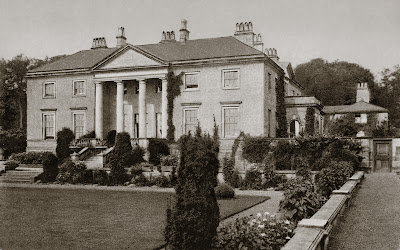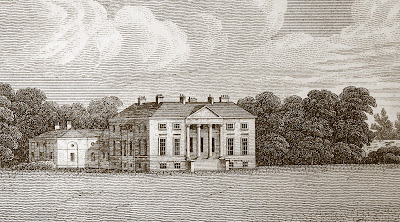Swarland Park was built for Davison Richard Grieve (high sheriff of
Northumberland in 1788) in 1765 by the architect John Carr of York in the
classical style. He had made his fortune as a merchant and shipowner on the Canada trade route during the American war
of independence. The house was simple in style, stuccoed
and using the doric order. The main portico faced SE across extensive parkland
with trees arranged to represent the British fleet positions during the battle
of Aboukir Bay against the French Fleet in 1798. This arrangement and an
obelisk memorial to Nelson erected in 1807 were commissioned by the owner Alexander
Davison (1750-1829) who purchased the hall on the death of Davison in 1795. He
found himself imprisoned a year later, found guilty of fraudulent activity
while organising government supplies. His family survived this episode and the
hall remained with them until 1874 when it came under the ownership of a coal
mine owner previously of Felton Hall, Hugh Andrews. Following a number of
exchanged ownerships which saw the house become a miners’ hostel in 1922, the building
was considered economically unsustainable and demolished in 1933 to make way
for a settlement to provide employment for tradesmen from Tyneside. Swarland
Hall Cottage still exists having been built in the late C19th to act as an
electricity generating house for the hall. It was in operation not long after
electricity was famously installed for the first time at nearby Cragside House in
the 1870s.


No comments:
Post a Comment